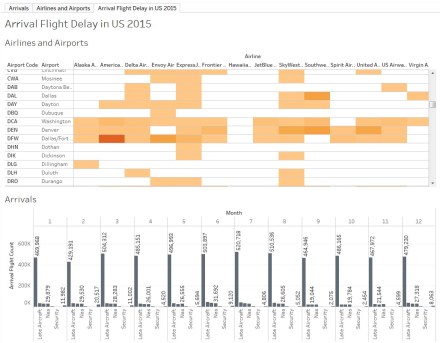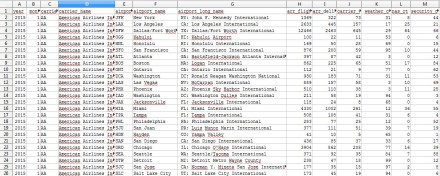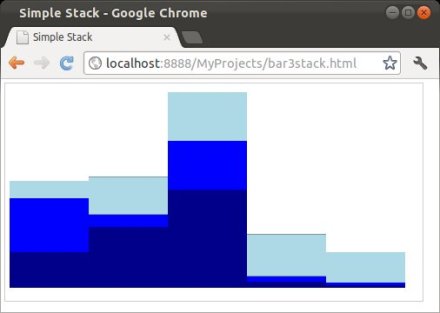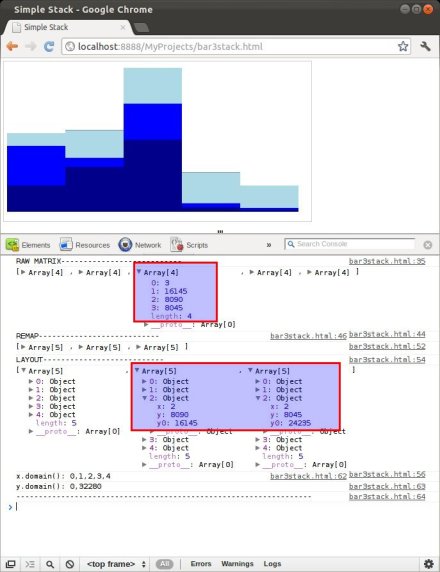After reviewing the flaws of the previous visualization of the DOT Airline performance data in part 1, I created an improved version with the same recordsets. It is a separate viz because the first version have some mistakes due to the number conversion during the csv import. I cleaned up, checked the data and used calculated fields to derive the sum of delays.
The basic concept is still the same, the matrix on the top left controls the dashboard, initially you see all data for 2015 combined, clicking into cells drills down.
I changed the barchart to stacked bars comparing total to delayed flight in one bar for each month.
I moved the split delay reasons into a separate bar chart and added a pie chart which reveals the main reason for delays (surprisingly weather and security have the smalles share!) The 2 lists are a Top 10 style lists highlighting the airports and airlines with the most delays.
How does the visualization transport information ? Let’s look at the strong and weak points of the second iteration.
+ The key information presentation is improved. We can see the viz is about delays.
– The dashboard starts to look a bit disorganized and the viewer eyes are moving around without a centre of attention.
+ The barchart now makes sense, you can compare total flights and delays.
– The detail delay reason over time does not create too much value as the distribution of reason is quite similar.
Conclusion: Spending more time on both data and visualizations improved the overall impact, though a bit cluttered.
Lets try to apply to some more tweaking..





















